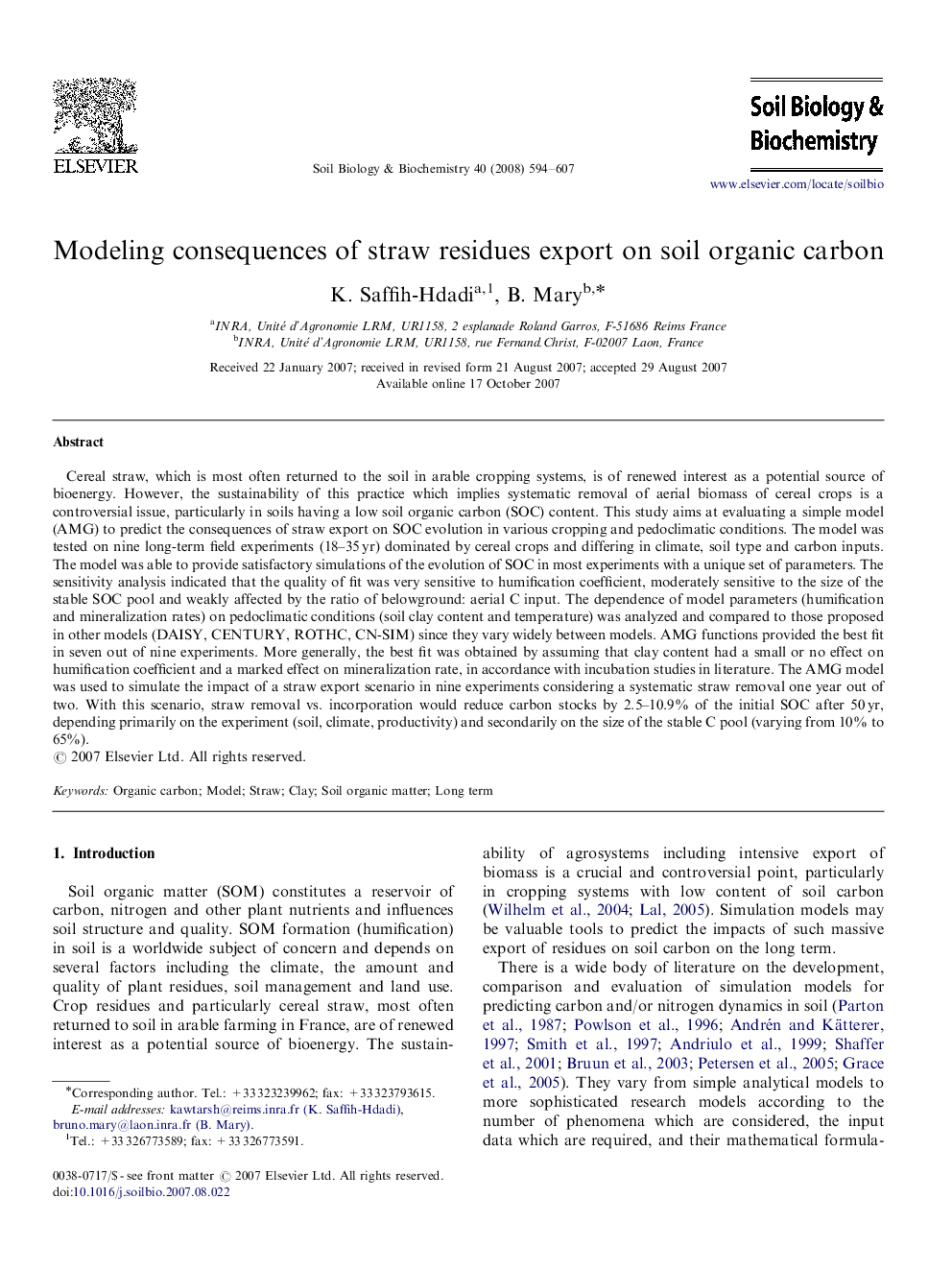| Article ID | Journal | Published Year | Pages | File Type |
|---|---|---|---|---|
| 2026986 | Soil Biology and Biochemistry | 2008 | 14 Pages |
Cereal straw, which is most often returned to the soil in arable cropping systems, is of renewed interest as a potential source of bioenergy. However, the sustainability of this practice which implies systematic removal of aerial biomass of cereal crops is a controversial issue, particularly in soils having a low soil organic carbon (SOC) content. This study aims at evaluating a simple model (AMG) to predict the consequences of straw export on SOC evolution in various cropping and pedoclimatic conditions. The model was tested on nine long-term field experiments (18–35 yr) dominated by cereal crops and differing in climate, soil type and carbon inputs. The model was able to provide satisfactory simulations of the evolution of SOC in most experiments with a unique set of parameters. The sensitivity analysis indicated that the quality of fit was very sensitive to humification coefficient, moderately sensitive to the size of the stable SOC pool and weakly affected by the ratio of belowground: aerial C input. The dependence of model parameters (humification and mineralization rates) on pedoclimatic conditions (soil clay content and temperature) was analyzed and compared to those proposed in other models (DAISY, CENTURY, ROTHC, CN-SIM) since they vary widely between models. AMG functions provided the best fit in seven out of nine experiments. More generally, the best fit was obtained by assuming that clay content had a small or no effect on humification coefficient and a marked effect on mineralization rate, in accordance with incubation studies in literature. The AMG model was used to simulate the impact of a straw export scenario in nine experiments considering a systematic straw removal one year out of two. With this scenario, straw removal vs. incorporation would reduce carbon stocks by 2.5–10.9% of the initial SOC after 50 yr, depending primarily on the experiment (soil, climate, productivity) and secondarily on the size of the stable C pool (varying from 10% to 65%).
